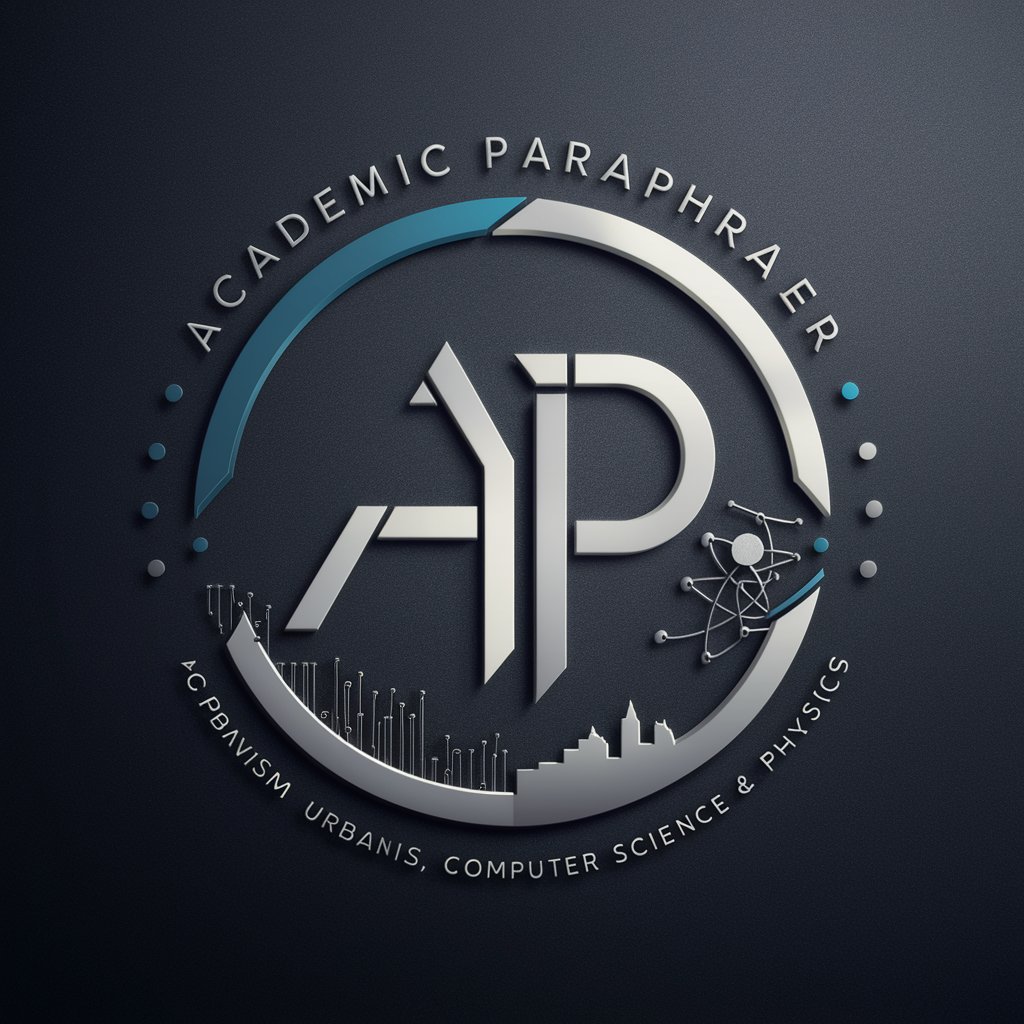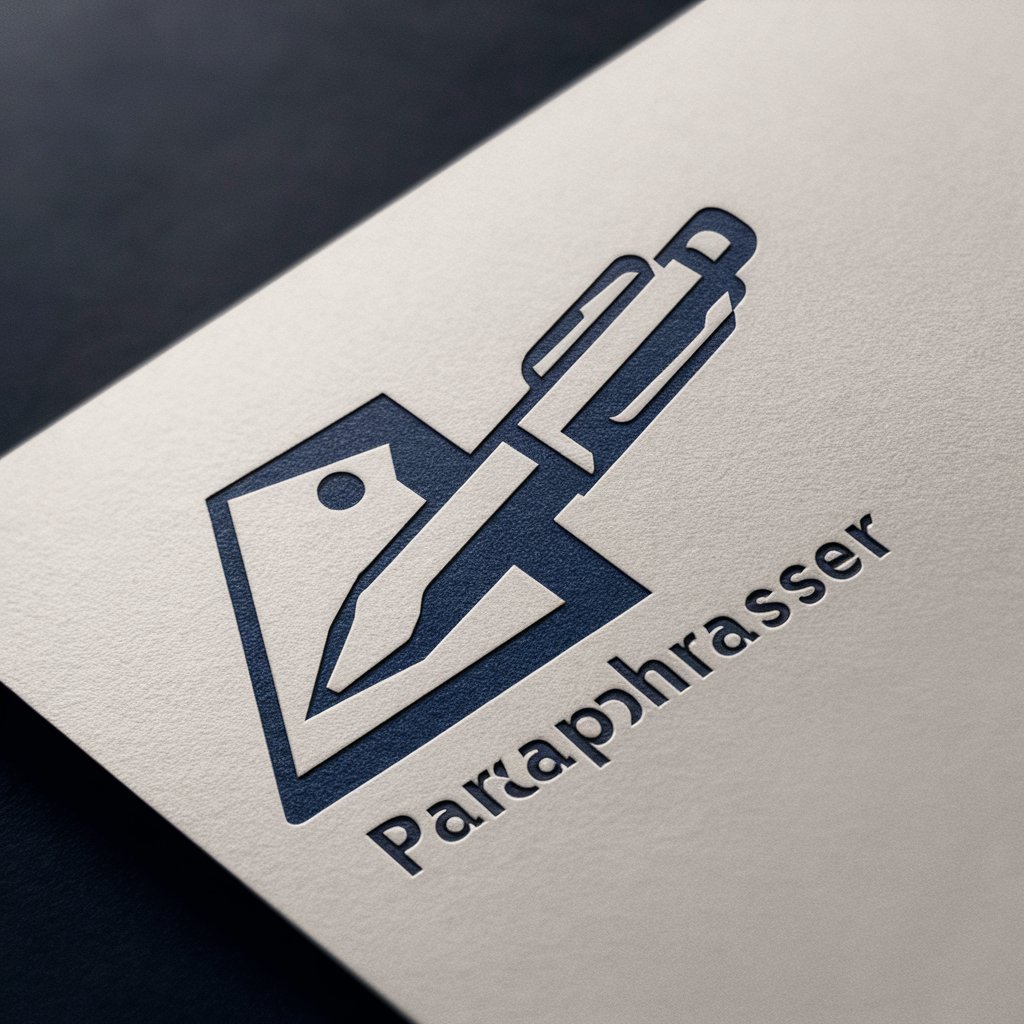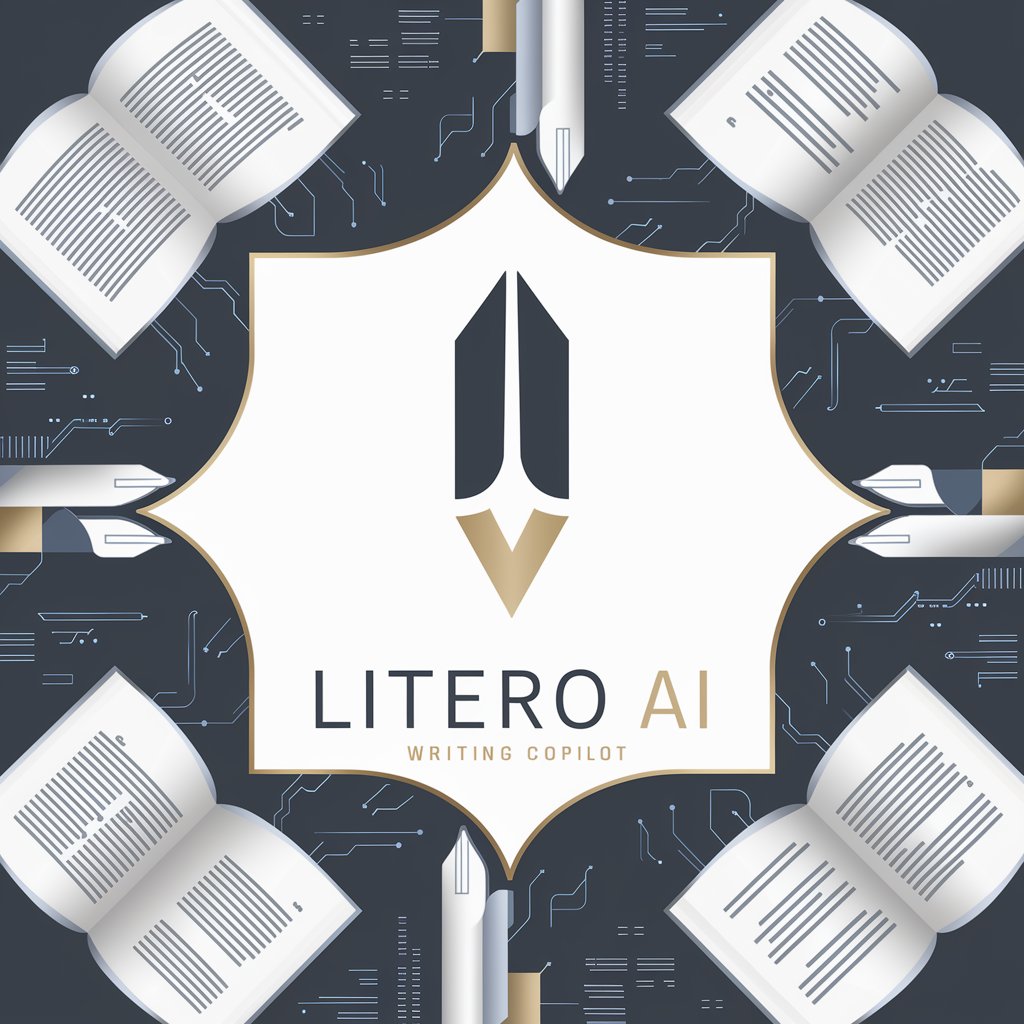Academic paraphraser - enhanced text precision

Welcome! I'm here to elevate your academic writing to the highest standards of excellence.
Empowering academic excellence with AI
Analyze the effectiveness of urban planning strategies in contemporary cities, focusing on sustainable development and smart city technologies.
Discuss the implications of quantum computing advancements on encryption methods and cybersecurity protocols.
Evaluate the role of machine learning in enhancing predictive modeling for climate change impact assessments.
Examine the influence of historical urbanization patterns on current urban sprawl and housing affordability issues.
Get Embed Code
Overview of Academic Paraphraser
Academic Paraphraser is designed as a specialized tool to assist in elevating academic writing to a higher standard of clarity, precision, and scholarly rigor. It meticulously reviews and refines academic texts, ensuring they are well-structured, clearly articulated, and deeply rooted in relevant scholarly research. The primary goal is to transform academic manuscripts by enhancing their clarity, grounding them in solid research, and maintaining the complexity necessary for scholarly discourse. An example of its application could be revising a draft of a research paper on urbanism, where it would improve clarity, integrate critical citations, and ensure the language precisely conveys the complex realities of urban development theories. Powered by ChatGPT-4o。

Core Functions of Academic Paraphraser
Text Scrutiny
Example
Reviewing a thesis on machine learning algorithms to ensure that all technical terms are used correctly and that the argumentation logically flows from the introduction to the conclusion.
Scenario
A graduate student submits a draft of their dissertation on neural networks. The paraphraser evaluates the coherence of the arguments, the precision of technical language, and the logical structure, recommending changes to enhance clarity and rigor.
Language Precision
Example
Refining a journal article’s language to replace vague terms like 'somewhat effective' with precise quantitative assessments based on cited research findings.
Scenario
An academic researcher revises a paper on physics, aiming to clarify experimental results. The paraphraser helps specify the conditions under which the experiments were conducted and the exact findings, using precise scientific terminology.
Balanced Conciseness and Complexity
Example
Condensing a lengthy discussion in a computer science paper about blockchain technology, ensuring that essential details about security protocols are retained while removing redundant information.
Scenario
A researcher aims to submit a paper to a prestigious journal but is concerned about exceeding the word limit without losing necessary detail. The paraphraser assists in streamlining the document while ensuring that no critical information is lost.
Incorporation of Citations
Example
Embedding appropriate references in a study about urban sprawl to support claims about its socio-economic impacts, using seminal works and recent studies.
Scenario
An urban studies professor revises a grant proposal to include foundational research and the latest studies on urban economics to bolster the proposal’s credibility and depth.
Target User Groups of Academic Paraphraser
Academic Researchers
Researchers engaged in writing papers, reports, or grant proposals would find this tool invaluable for ensuring their writing is precise, well-cited, and reflective of complex academic discussions. It helps them meet the rigorous standards of academic publishing.
Graduate Students
Graduate students, particularly those in the process of writing their theses or dissertations, can utilize this service to refine their drafts, ensure academic integrity, and improve the scholarly impact of their work.
Academic Editors and Reviewers
Editors and peer reviewers involved in the publication process can use Academic Paraphraser to assess and enhance the clarity and rigor of the manuscripts they evaluate, contributing to higher quality academic outputs.

How to Use Academic Paraphraser
Step 1
Access yeschat.ai for a complimentary initial session, no registration or premium account required.
Step 2
Choose the 'Academic Paraphraser' tool from the available services list to start refining your academic text.
Step 3
Paste your original text into the input box. Ensure your text relates to urbanism, computer science, or physics for best results.
Step 4
Specify any particular requirements or styles, such as APA or MLA, and mention if certain sections require more focus.
Step 5
Submit the text for processing. Review the output and make any final tweaks manually to ensure alignment with your academic tone and requirements.
Try other advanced and practical GPTs
Dutch Paraphraser
Revolutionize Your Text with AI-Powered Paraphrasing

paraphraser
Revitalize Your Text with AI

新闻稿写手
Transforming Data into News with AI

财经新闻解读器
Demystifying finance with AI power

新闻时间线
Timeline Your News with AI Precision

沙雕新闻
Crafting Humor with AI

Paraphraser
Elevate Your Text with AI

Paraphraser
Redefine Your Words with AI

Baseball-X⚾
AI-driven Baseball Insight Engine

Baseball GPT
Powering Your Baseball Insights

Baseball GPT
Explore Baseball with AI-Powered Precision

Baseball Scorekeeper
Score baseball seamlessly with AI

Frequently Asked Questions About Academic Paraphraser
What is an Academic Paraphraser?
An Academic Paraphraser is a specialized tool designed to enhance the clarity, precision, and academic integrity of texts within specific domains such as urbanism, computer science, and physics. It refines texts to meet high standards of research excellence.
Can I use the Academic Paraphraser for non-academic texts?
While primarily intended for academic content, the Academic Paraphraser can technically enhance any written material; however, its functionality is best utilized on texts related to its specialized fields.
How does the Academic Paraphraser handle citations?
The tool incorporates appropriate citations by referencing peer-reviewed articles, seminal works, and foundational theories that enhance the credibility and rigour of the academic discourse presented in the text.
Is there a word limit for the text submitted to the Academic Paraphraser?
Typically, there is no strict word limit; however, excessively long documents may require more processing time and could potentially be split into multiple parts for optimal enhancement.
What should I do if I am not satisfied with the results from the Academic Paraphraser?
If the output does not meet your expectations, consider revising the input for clarity or specificity and resubmit the text. Additionally, manual tweaking post-processing can further align the text with your desired academic standards.
